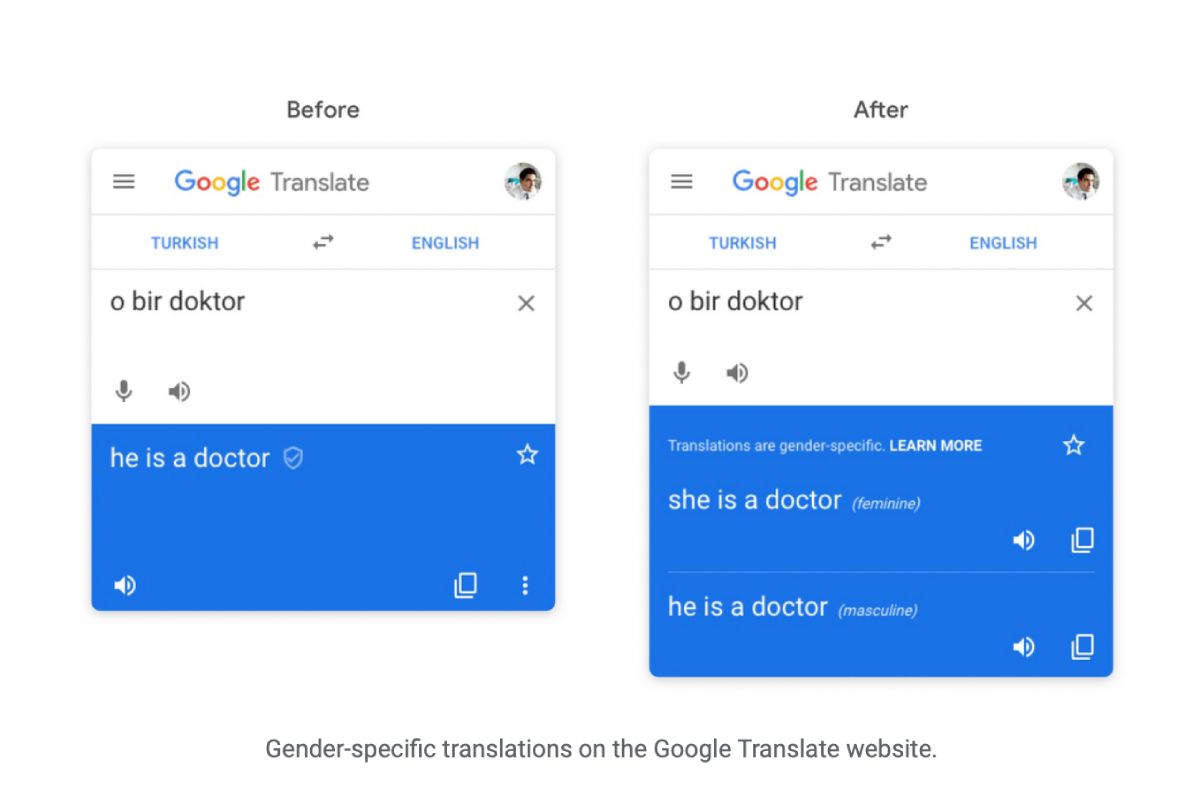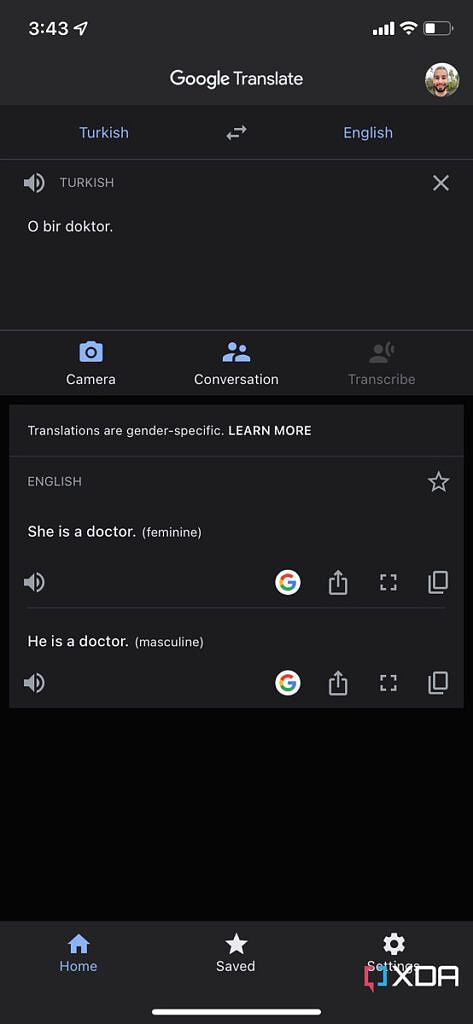We live on an increasingly-diverse planet. Thanks to the internet, planes and other modern forms of transportation, and globalization, people from completely different backgrounds often find themselves interacting with each other -- online or otherwise. The English language acts as a lingua franca in many cases, as it's widely taught and spoken around the globe. However, we sometimes still need to translate text from one language to another. One of Google Translate's flaws was not necessarily providing correctly-gendered translations. The algorithm would assume whether a certain word is masculine or feminine based on the context. Back in 2018, the company announced that it's launching gender-specific translations on the Google Translate web app. The feature has now finally made it to the iOS app -- three years later.
Google has finally brought gender-specific translations to its Translate app on iOS. The feature works when translating gender-neutral queries from Turkish, Finnish, Persian, and Hungarian to English, and from English to Spanish. Previously, the algorithm would default to either a masculine or feminine result -- depending on the context. Google explains:
Google Translate learns from hundreds of millions of already-translated examples from the web. Historically, it has provided only one translation for a query, even if the translation could have either a feminine or masculine form. So when the model produced one translation, it inadvertently replicated gender biases that already existed. For example: it would skew masculine for words like “strong” or “doctor,” and feminine for other words, like “nurse” or “beautiful.”
The feature has been available on the web for a while now, but it has finally made its way to the updated iPhone app. Google has previously promised it would implement it on its mobile apps. So it's safe to assume that Android users will eventually get to take advantage of it as well. It's not uncommon for the company to bring new features to its apps on Apple's platforms before its own. Additionally, the company is "already thinking about how to address non-binary gender in translations."
Which app do you depend on to translate between two languages? Let us know in the comments section below.


